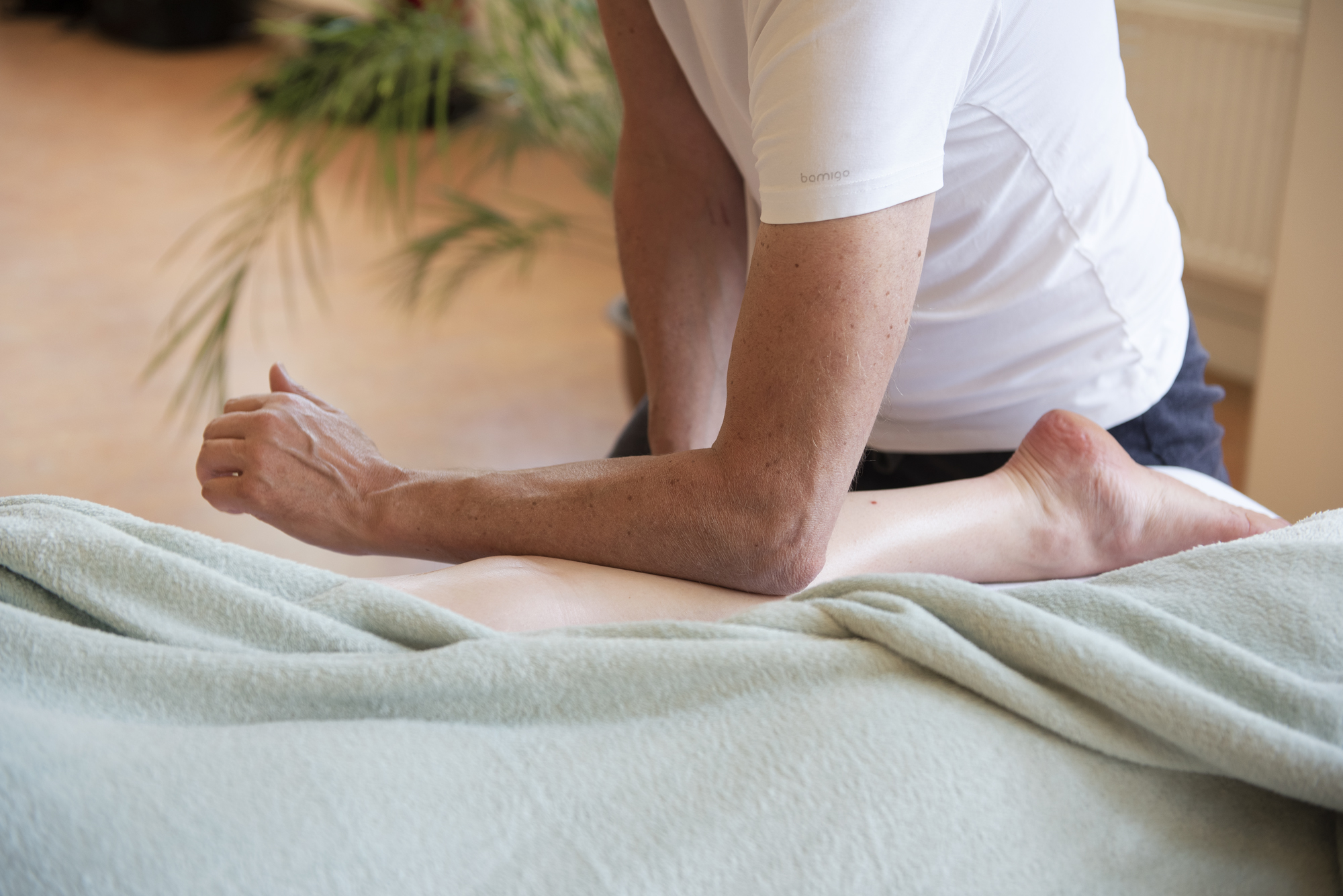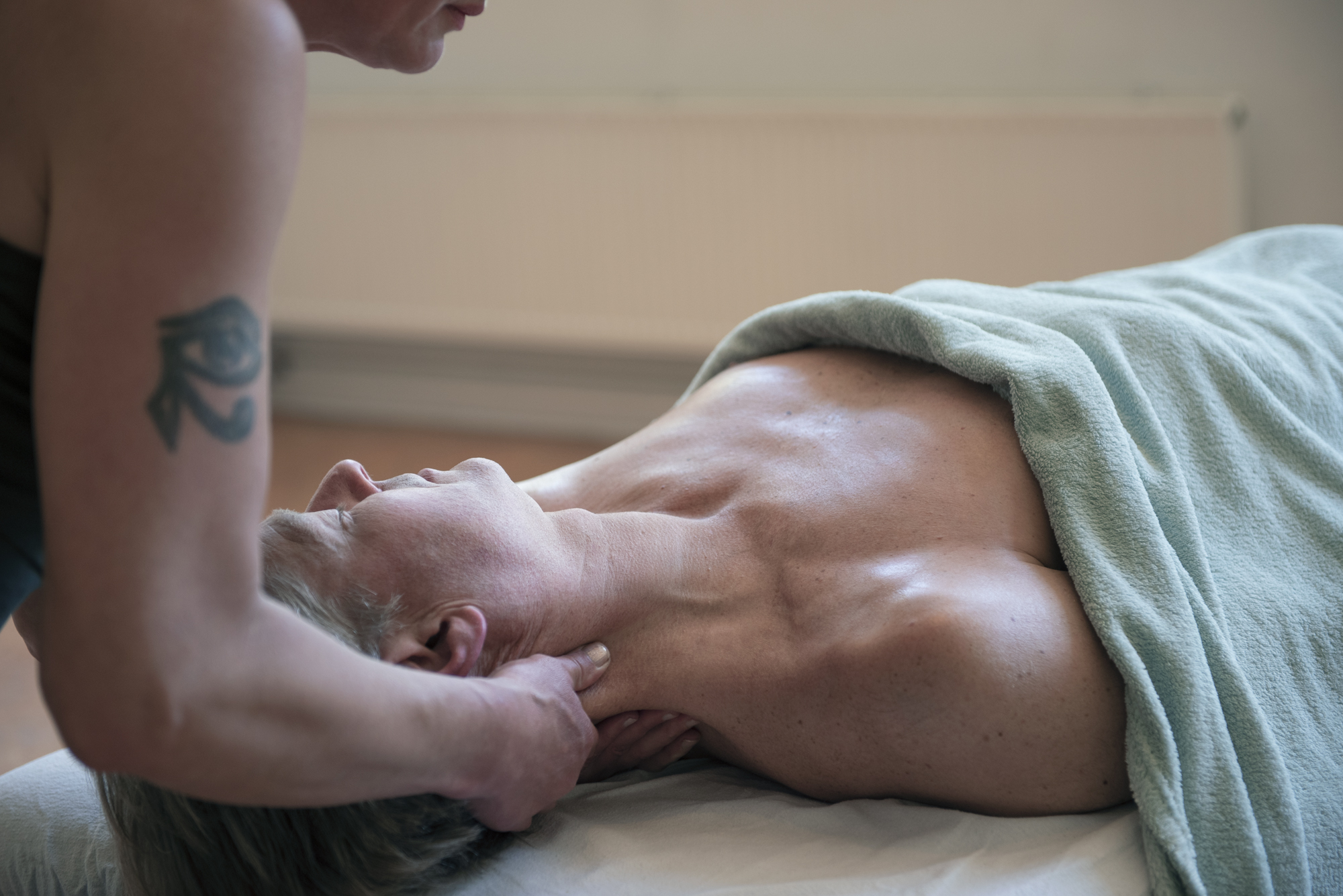
Fascia; sculpting the Human Form
Working with fascia to enhance posture and movement Fascia envelops all the structures in the human body – bones, muscles, organs, nervous and circulatory systems. It also plays a vital…
| Startdata | Every module is on a consecutive friday, saturday and sunday |
| Docent(en) | John Armstrong |
| Certificaat | Ja |
Working with fascia to enhance posture and movement
Fascia envelops all the structures in the human body – bones, muscles, organs, nervous and circulatory systems. It also plays a vital role in our posture and spatial awareness during movement (proprioception). Ida Rolf described Fascia as: “… the organ of form.” To successfully work with fascia is an important skill for bodyworkers, yet manual techniques and stretches only begin to address the complexity of this holistic organ of the human body.
We will examine fascia in its role as a tensional element in a bio-tensegrity system where with the structural element – the skeletal system, it gives each individual a unique posture and movement dynamic. We will examine posture, alignment, range-of-motion to learn how shortcomings in these create constraints and restrictions that often result in pain; it is where chronic pain is often revealed.
Through observation, movement and touch, students will learn to assess the human body (body reading) from a multi-dimensional perspective. This in turn, will guide the choice and order in which students will apply the intervention techniques taught during this course.


Four modules of three days filled with fascia
Each module will focus on a selected area of the body:
- Module 1: Lower girdle – pelvis, legs, feet and toes — Foundation
- Module 2: Upper girdle – shoulders, arms, hands and fingers — Expression
- Module 3: Connection of the Girdles – spine, thorax and viscera.
- Module 4: Integration and “the Crown” — neck, cranium, face / primary sensory organs.
Entry level
You can apply for this course after following year 2 of the Akademie.
People outside the Akademie or students from year 1 of the Akademie can follow this course after following Module 0.
In this module you will learn the basics (also in 3 days for € 375,-) to get you ready for module 1.
Module 0: Introduction
This workshop will introduce students to concepts of bio-tensegrity and their use in understanding human posture and biomechanics. Several characteristics of fascia will be explored and their implications for human structure and posture. We will refine touch to better work with different fascial structures; sample techniques will be introduced and used to develop a better feel for the different fascial structures in the body. Terminology, assessment techniques and embodiment techniques will also be covered.
Every 3-day module will include:
- Anatomy and physiology specific to the body region being addressed.
- Movement practices to highlight properties and characteristics of proper function.
- Multi-dimensional assessment of each body region within a whole-body perspective and a discussion of common pathologies.
- Manual and movement intervention techniques & student exchange practicums.
- Clinical Application of the learnings in each module through a supervised session to 3rd party models (external clients).
“This course is focused on the structure and movement of the fascia.”
John Armstrong
Fascia needs a sensitive touch
The course focuses on developing and refining a sensitive, receiving touch, so that students may “listen” to their clients to determine the correct pressure, duration and direction of your interventions. Use of manual tools (fingers, knuckles, fist, forearm, elbow) is demonstrated and developed further with suggestions on the best tools to use for the techniques. During student exchanges special attention will be given to body use to develop awareness and best-practices to protect practitioners from injury.
Key to this workshop series is the pragmatic/practical selection of techniques and progression of work that can immediately make an impact for anyone working in the bodywork professions. What makes this program unique is that each element of this program – anatomy, movement, touch and techniques are specifically focused on providing an integrated, simple, effective and powerful approach that can be easily learned and practiced. In this context, learning to apply deep tissue / fascia techniques are taught in a dynamic, whole-body framework addressing posture and movement. This is not a symptom/technique approach.
Learning perspective
After this program, students can see how:
1. Posture, alignment and movement are associated with chronic pain;
2. Posture and movement patterns correlate with client complaints, body experience, restrictions in movement;
3. To work with fascia within a holistic approach to resolving body tension;
4. To further develop their touch to address different levels of tissue;
5. To apply specific techniques for selected parts of the body;
6. To apply sequences of techniques to build greater results;
7. Exercises & movement can help to embody the structural aspect of this work and provide additional support to manual work performed on the table;
8. Develop more advanced approaches to client guidance during sessions (attitude, communication, choices of interventions and management of a session);
9. To view client sessions in the context of series of work vs. individual sessions:
10. To monitor and apply self-care when working with clients — physically, mentally and emotionally.
About the trainer
John Armstrong, Certified Advanced Rolfer®
Trained by the European Rolfing® Association in Munich, he studied with several prominent Fascia and Rolfing® Structural Integration experts :
- Dr. Robert Schleip (Fascia Project, Technical University of Munich)
- Dr. Peter Schwind (author of numerous books on Fascial Manipulation)
- Michael Salveson (first Instructor certified personally by Dr. Ida Rolf).
With degrees in Psychology, Engineering and Business, John brings his broad education and international experience to his approach to bodywork and teaching. Personal interests include the effects of workplace and nutrition on fascia tension patterns and health, spinal and nerve-related conditions, chronic inflammation/pain management. Active in private practice, he has three locations – Amsterdam-Noord, Apeldoorn & Zwolle. For more information see: www.evolutionrolfing.com.
Akademie is een onderdeel van Esoterra. De administratie wordt verwerkt door Esoterra. Bij een bestelling word je doorverwezen naar het betalingsportaal van Esoterra.